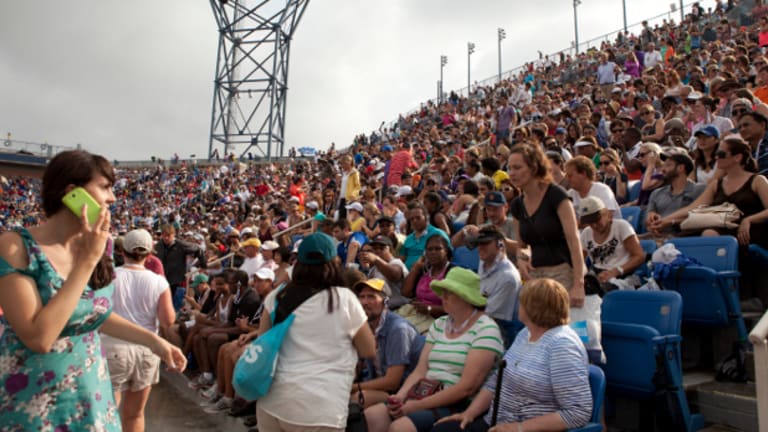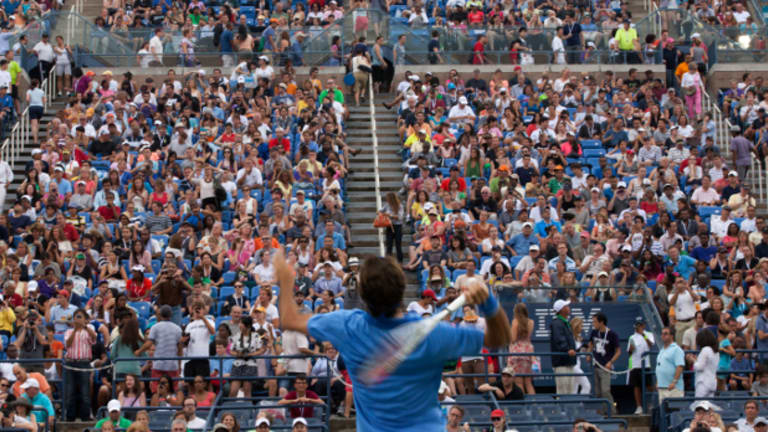NEW YORK—“Louis Armstrong Stadium has got to be the worst-stewarded court in tennis. People always moving around. Players always getting annoyed.”
A British tennis journalist tweeted these words of frustration while he watched Andy Murray play inside Armstrong, the U.S. Open's second-largest stadium, last week. You could understand the writer’s need to vent. The stewards—known as ushers in the States—on that court have been famous for three decades for not running the tightest ship in the tennis business. For 16 of those years, when Armstrong was the much larger main stadium on the grounds, and contained many more awful nosebleed seats, those ushers were also famous for letting people move down in exchange, essentially, for whatever was in their wallet. Armstrong has never been the most pristine of sporting palaces.
But for any longtime American tennis fan, it’s our imperfect palace. The seats are cramped, the wind swirls inside, and there are no architectural or decorative touches to please the eye. Designed and built in minimalist, modernist 1964, it’s just a concrete bowl with enormous steel light fixtures towering over it. And, as the Brit said above, someone is always moving around. Armstrong has what city planners would now call “a circulation problem.” Outside of Rome, it may be the most restless tennis court in the world.
To start, it's not easy to get in; the entrances that let fans up from below are narrow by today’s standards. And once you are inside, it’s not easy to find a place to sit down; the concrete pathways are cramped. During changeovers, this can lead to a stadium-wide scrum as fans, after waiting in long lines below, find themselves with less than a minute to scan the arena for a few decent empty spaces. As the umpire calls time, you see a lot of confused faces and last-second dashes. It’s not surprising that a British journalist would find this ad hoc system appalling. Wimbledon mans the entrances to its show courts with ushers from the London Fire Brigade. Their military-style uniforms alone are enough to keep you from trying to sneak around them—or offer them a bribe.

